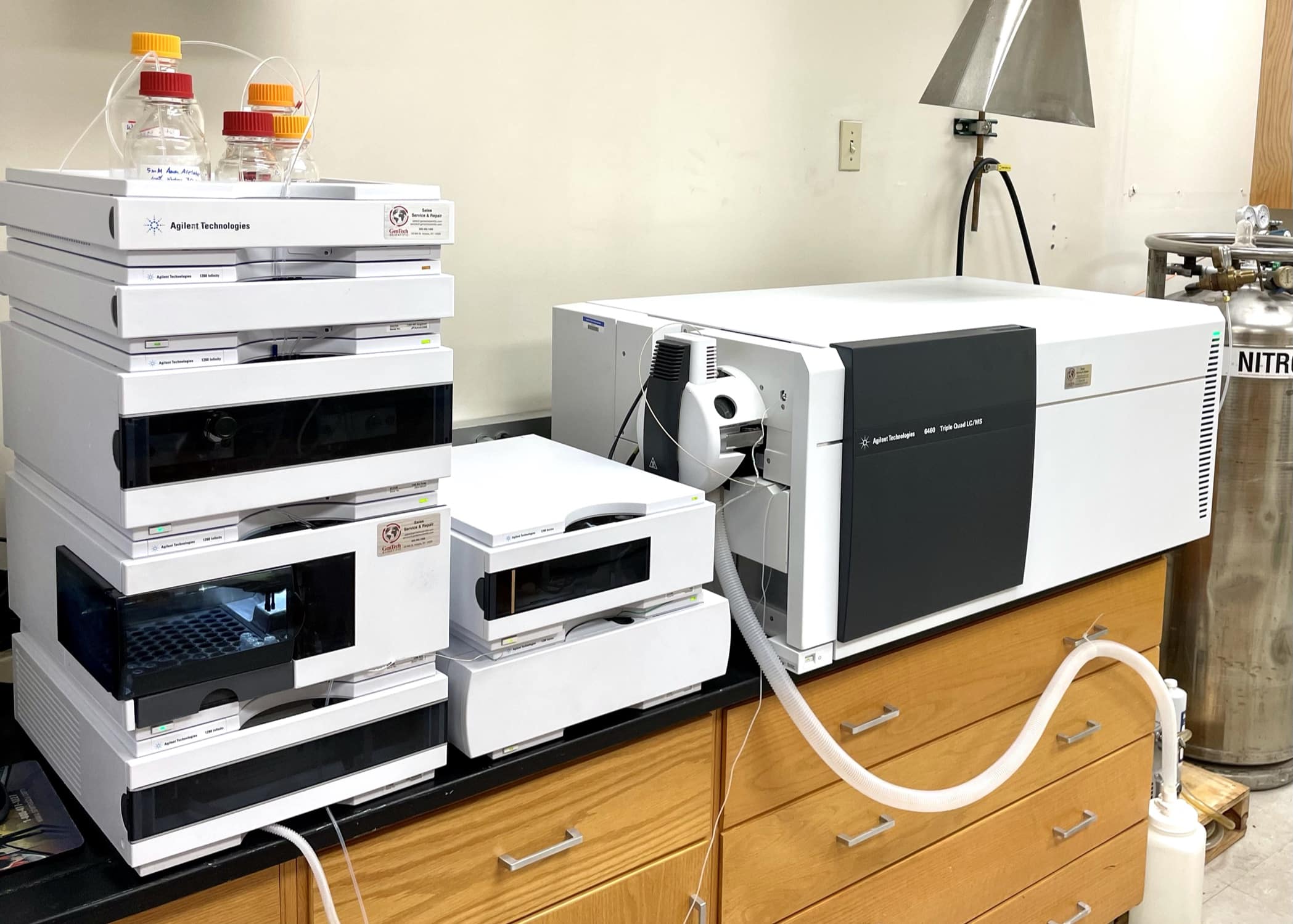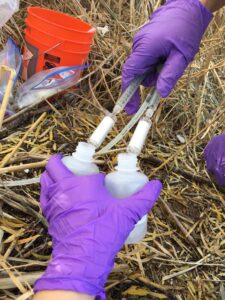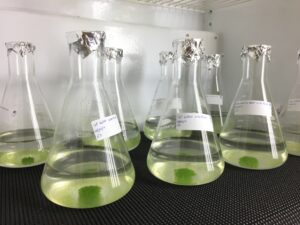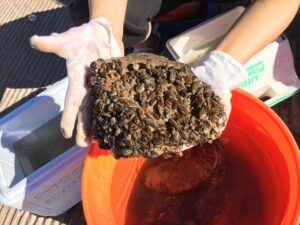Environmental Chemistry Laboratory
Lab Description
The DRI Environmental Chemistry Laboratory conducts research on the occurrence, fate, and transport of contaminants of emerging concern in both natural and engineered environments. The lab is fully equipped to identify and quantify per- and polyfluoroalkyl substances (PFAS), pharmaceuticals, personal care products, and endocrine disrupting chemicals. It has the capability to sample, process, and analyze contaminants of emerging concern in water, wastewater, sludge, soils, and biota using innovative and robust methods. The research goal is to improve our understanding of the interactions between contaminants and the environment, as well as evaluate potential human exposure and health risks.

ONGOING PROJECTS
1. Occurrence and mass balance of PFAS during municipal wastewater treatment
This study focuses on understanding the persistence, removal, and mass flow of PFAS during municipal wastewater treatment. The study monitors PFAS dissipation and formation in effluent, sludge, and air at each treatment stage of a tertiary treatment plant in the Las Vegas metropolitan area for a comprehensive mass balance calculation.
2. Interactions between PFAS and microplastics
Microplastics and PFAS are both ubiquitous contaminants of emerging concern in the environment. Microplastics can act as vectors to absorb organic contaminants, such as PFAS. This study aims to understand how microplastics and biofilms grown on microplastic surfaces facilitate the sorption and degradation of PFAS.
3. Plant uptake of antibiotics and antibiotic resistance genes (ARGs) in agroecosystems irrigated with reclaimed water
Plants are exposed to untreated contaminants, such as antibiotics, via irrigation with reclaimed water. This study evaluates the occurrence and transport of antibiotics and ARGs in spinach and cherry tomatoes irrigated with tertiary effluents in soil pots and hydroponic systems.
COMPLETED PROJECTS
4. Per- and polyfluoroalkyl substances (PFAS) in Nevada watersheds
This study evaluated the spatiotemporal distribution of PFAS in surface water and sediments from the Las Vegas Wash and Lake Mead, as well as determined the sorption affinity of PFAS to sediments and their bioaccumulation potential in freshwater green algae.
5. Evaluation of antibiotic resistance in the urban wetland ecosystem: Las Vegas Wash
This study evaluated the prevalence of antibiotic resistance genes (ARGs) corresponding to sulfamethoxazole (sul1 and sul2), ampicillin (ampC), tetracycline (tetO and tetW), and vancomycin (vanA) in the Las Vegas Wash. Of the target ARGs, the most prevalent genes found were sul1, sul2, and vanA. The prevalence of the target ARGs showed clear spatiotemporal variability. The results indicate that the Las Vegas Wash wetlands are an important reservoir of ARGs from wastewater discharge.

6. Algae-mediated uptake and removal of pharmaceuticals and personal care products (PPCPs) and endocrine disrupting chemicals (EDCs) in aquatic ecosystems
This study focused on understanding the uptake and removal of PPCPs and EDCs in algal cultures. The information is critical to evaluate the potential risks of PPCPs and EDCs to other aquatic organisms at higher trophic levels within an ecosystem. The research demonstrates that algal species (e.g., Nannochloris sp. and Chlorella sp.) can accumulate PPCPs and EDCs at various levels depending on the chemical characteristics and algal species.

7. Uptake of pharmaceutical and steroidal compounds by quagga mussels (Dreissena bugensis) in Lake Mead
This study evaluated the uptake of endocrine disrupting chemicals (EDCs) by quagga mussels, an invasive species in Lake Mead. The field study showed that testosterone was the most abundant steroid in the mussel tissue (6.3 to 20 ng/g), but other EDCs (i.e., bisphenol A, triclosan, and salicylic acid) were also detected in the mussel tissue (24 to 47 ng/g). Overall, the study showed that this invasive species was exposed to EDCs and could be used to reflect water quality deterioration in Lake Mead.

MAJOR EQUIPMENT
- Agilent 1260 Infinity high-performance liquid chromatography coupled with Agilent 6460C triple quad mass spectrometer
- Agilent 1200 high-performance liquid chromatography
- Low-temperature diurnal illumination incubators (Model 2015, Sheldon Manufacturing)
- 16 port vacuum manifold (Thermo Fisher Scientific)
- Spectrophotometer (Model 4001/4, Thermo Fisher Scientific)
- Autoclave (MLS-3750/3780, Sanyo)
- Centrifuges (Fisher Marathon 21K/R, Horizon Premier 755VES)
- Olympus Infinity W-1C microscope
- Nikon SMZ ZOOM stereo microscope
- YSI
Coming Soon.
Coming soon.
CONTACT
Xuelian Bai, Ph.D.
Lab Director
Xuelian.Bai@www-dev.dri.edu
LAB LOCATION
Desert Research Institute
755 East Flamingo Road
Las Vegas, NV 89119
DIVISION
Hydrologic Sciences